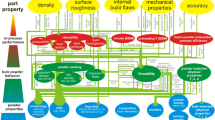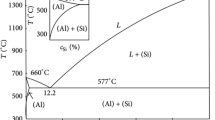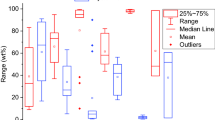Researchers of the Nekrasov Iron & Steel Institute, National Academy of Sciences of Ukraine, conduct studies aimed at developing analytical methods for predicting the strength characteristics of pellets. These studies use analyses of phase interaction mechanisms within free-flowing media to develop theoretical ideas on the formation of strong bonds in the pellets through adhesion. This led to the establishment of local models of adhesion processes for two basic particle interaction schemes: ‘particle + particle’ and ‘particle + liquid phase + particle’. Experimental studies undertaken in laboratory premises of the Nekrasov Iron & Steel Institute for the ‘particle + particle’ interaction scheme provided the foundation for a method to determine the strength characteristics of pellets made from fine-grained materials with zero moisture at compaction pressures ranging from 50 to 220 MPa. The first part of the paper justified methodological prerequisites for experiments to study strong bonds within the compacts for the ‘particle + liquid phase + particle’ interaction scheme. The methodological prerequisites accounted for the mechanical, physical, and physicochemical interactions, both between individual particles of the pelletized material and between the charge components (liquid phase). A generalized analysis of the experimental findings allowed evaluating a range of potential adhesion processes for the ‘particle + liquid phase + particle’ interaction scheme, pinpointing their manifestation, examining their nature, and assessing the effect of a liquid phase introduced into the pelletized charge, considering the compaction pressures applied. This paper focuses on experimental findings for the ‘particle + liquid phase + particle’ interaction scheme, establishing analytical relationships between the strength characteristics of pellets and integral indicators of the adhesive bond mechanism in this interaction scheme (in particular, relationship between the bulk density (ρ0) and moisture content (Wm) for materials in the first group of systematization). Additionally, an analytical relationship between the compaction factor for compacts produced at a pressure (P) of 220 MPa (Kcomp220), considering their loosening, and the bulk density of materials (ρ0) in the first group of systematization was established for the first time. Analysis of the findings led to a hypothesis suggesting that the amount of the liquid phase (in particular, water) introduced into the material should be balanced by its potential displacement during compaction to achieve maximum compact strength. Based on the hypothesis, a novel equation was derived to calculate the amount of liquid binder (water) to promote the most favorable conditions for the adhesion processes, thereby imparting the maximum strength to compacts from materials in the first group of systematization. A comparative analysis between the experimental findings and calculations confirmed that the equation was accurate. Consequently, an analytical method was proposed to determine the moisture content needed in the charge to produce compacts with maximum strength from materials in the first group of systematization (ρpycn ≥ 4.64 × × 10–3).









Similar content being viewed by others
References
V.V. Ozhogin, “Interrelation between mechanical strength indicators for pelletized materials,” Visn. Priazov. Derzh. Tekh. Univ., Issue 16, 17–21 (2006).
S.V. Vashchenko, B.N. Maimur, V.I. Petrenko, K.V. Baiul, A.Yu. Khudyakov, N.A. Solodkaya, and E.B. Prokudina, “Examining the conditions and mechanisms of imparting strong bonds in compacts in pelletizing of fine-grained feedstock,” in: Fundamental and Applied Issues of Ferrous Metallurgy (Collected Scientific Papers) [in Russian], Inst. Chern. Metall. NAN Ukrainy, Naukova Dumka, Kyiv (2015), Issue 30, pp. 347–362.
S.V. Vashchenko, A.Yu. Khudyakov, K.V. Baiul, and Yu.S. Semenov, “Selecting the batch composition in briquetting,” Steel Trans., 48, No. 8, 509–512 (2018).
A.Yu. Khudyakov, S.V. Vashchenko, K.V. Baiul, and Yu.S. Semenov, “Experimental verification of new compaction equations for fine materials of the mining and metallurgical complex. Part 1. Basic compaction equation,” Refract. Ind. Ceram., 62, No. 1, 15–24 (2021), (SCOPUS, Q3) https://doi.org/10.1007/s11148-021-00554-z.
A.Yu. Khudyakov, S.V. Vashchenko, K.V. Baiul, and Yu.S. Semenov, “Experimental verification of new compaction equations for fine materials of the mining and metallurgical complex. Part 2. Basic compaction equation,” Refract. Ind. Ceram., 62, No. 1, 25–31 (2021), (SCOPUS, Q3), https://doi.org/10.1007/s11148-021-00555-y.
S.V. Vashchenko, A.Yu. Khudyakov, K.V. Baiul, and Yu.S. Semenov, “Method for predicting the strength of pellets produced from dry fine-grained materials,” Powder Metall. Met. Ceram., 60, No. 3–4, 247–256 (2021), https://doi.org/10.1007/s11106-021-00233-1/.
S.V. Vashchenko, A.Yu. Khudyakov, K.V. Baiul, and Yu.S. Semenov, “Development of local models for adhesive bonding of particles in pelletizing,” Stal, No. 5, 4–8 (2019).
B.N. Maimur, I.G. Muravieva, V.I. Petrenko, and S.V. Vashchenko, “Effect of the properties of fine-grained feedstock materials on their compaction in roller pellet presses,” Fundamental and Applied Issues of Ferrous Metallurgy (Collected Scientific Papers) [in Russian], Inst. Chern. Metall. NAN Ukrainy, Naukova Dumka, Kyiv (2014), Issue 28, pp. 310–325.
L. Lohmeier, C. Thaler, C. Harris, W. Ralf, and H.-W. Schroder, “Briquetting of fine-grained residues from iron and steel production using organic and inorganic binders,” Steel Res. Int., 91, No. 12, 202–238 (2020).
A.D. Zimon, Adhesion of Liquid and Wetting [in Russian], Khimiya, Moscow (1974),
p. 416.
I.G. Kaplan, Introduction to the Theory of Molecular Interactions [in Russian], Nauka, Moscow (1982), p. 312.
J.N. Israelachvili, Intermolecular and Surface Forces, Academic Press (2011).
K. Baiul, A. Khudyakov, S. Vashchenko, P. Krot, and N. Solodka, “The experimental study of compaction parameters and elastic after-effect of fine fraction raw materials,” Min. Sci., 27, 7–18 (2020), DOI: https://doi.org/10.37190/msc202701.
O.V. Almyasheva, V.V. Gusarov, and O.A. Lebedev, Surface Phenomena: Textbook [in Russian], Izd. SPbGETU LETI, Saint-Petersburg (2004), p. 28.
Author information
Authors and Affiliations
Corresponding author
Additional information
Translated from Poroshkova Metallurgiya, Vol. 62, Nos. 3–4 (550), pp. 28–40, 2023.
Rights and permissions
Springer Nature or its licensor (e.g. a society or other partner) holds exclusive rights to this article under a publishing agreement with the author(s) or other rightsholder(s); author self-archiving of the accepted manuscript version of this article is solely governed by the terms of such publishing agreement and applicable law.
About this article
Cite this article
Vashchenko, S.V., Khudyakov, A.Y., Baiul, K.V. et al. Method of Determining the Liquid Phase Content in the Pelletized Charge for Producing Compacts with the Maximum Strength II. Development of the Method. Powder Metall Met Ceram 62, 153–163 (2023). https://doi.org/10.1007/s11106-023-00377-2
Received:
Published:
Issue Date:
DOI: https://doi.org/10.1007/s11106-023-00377-2




